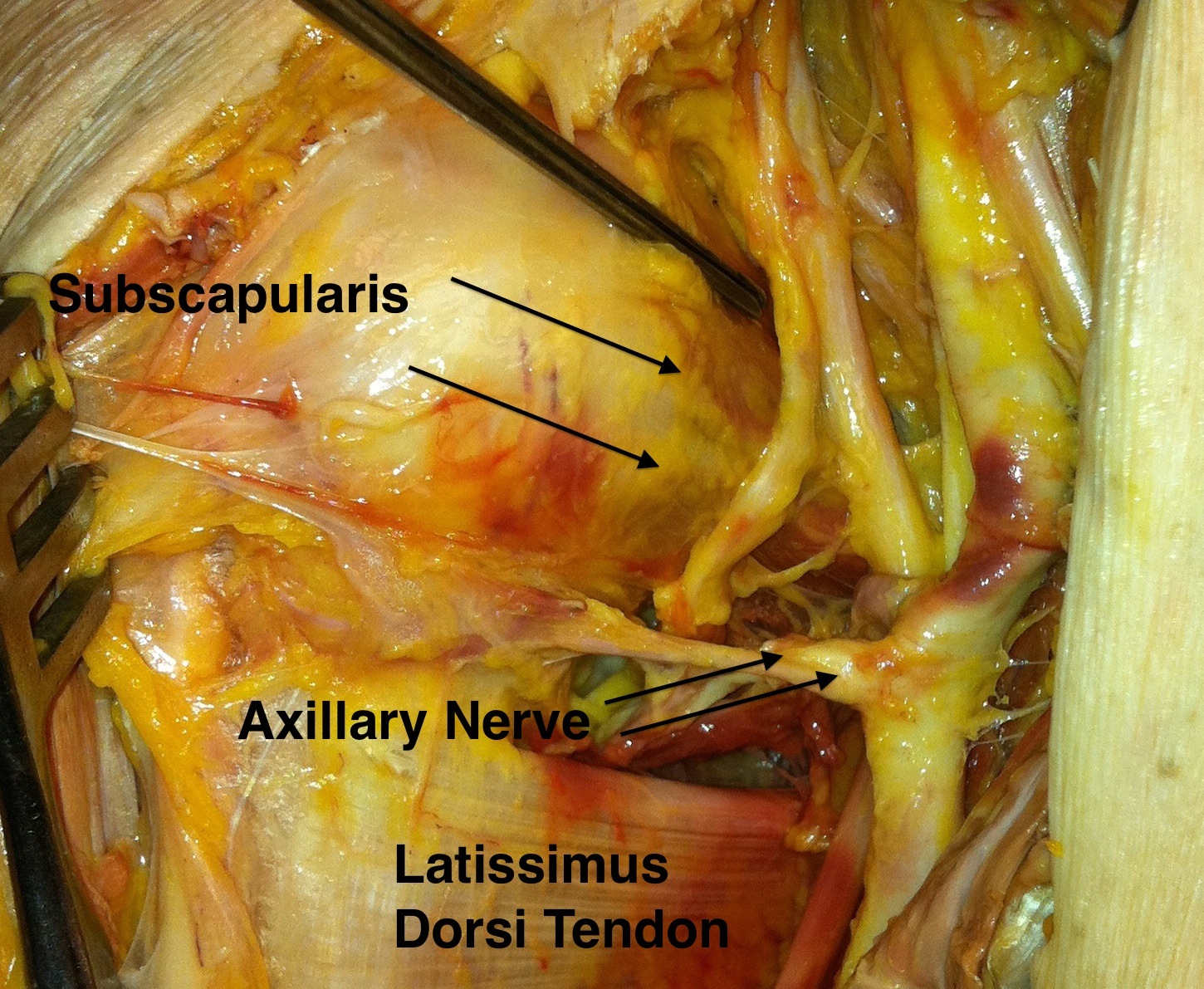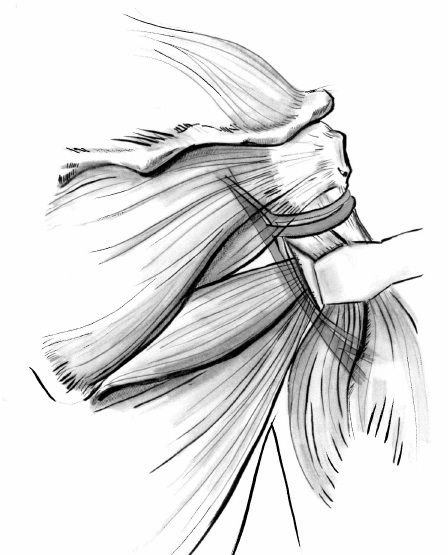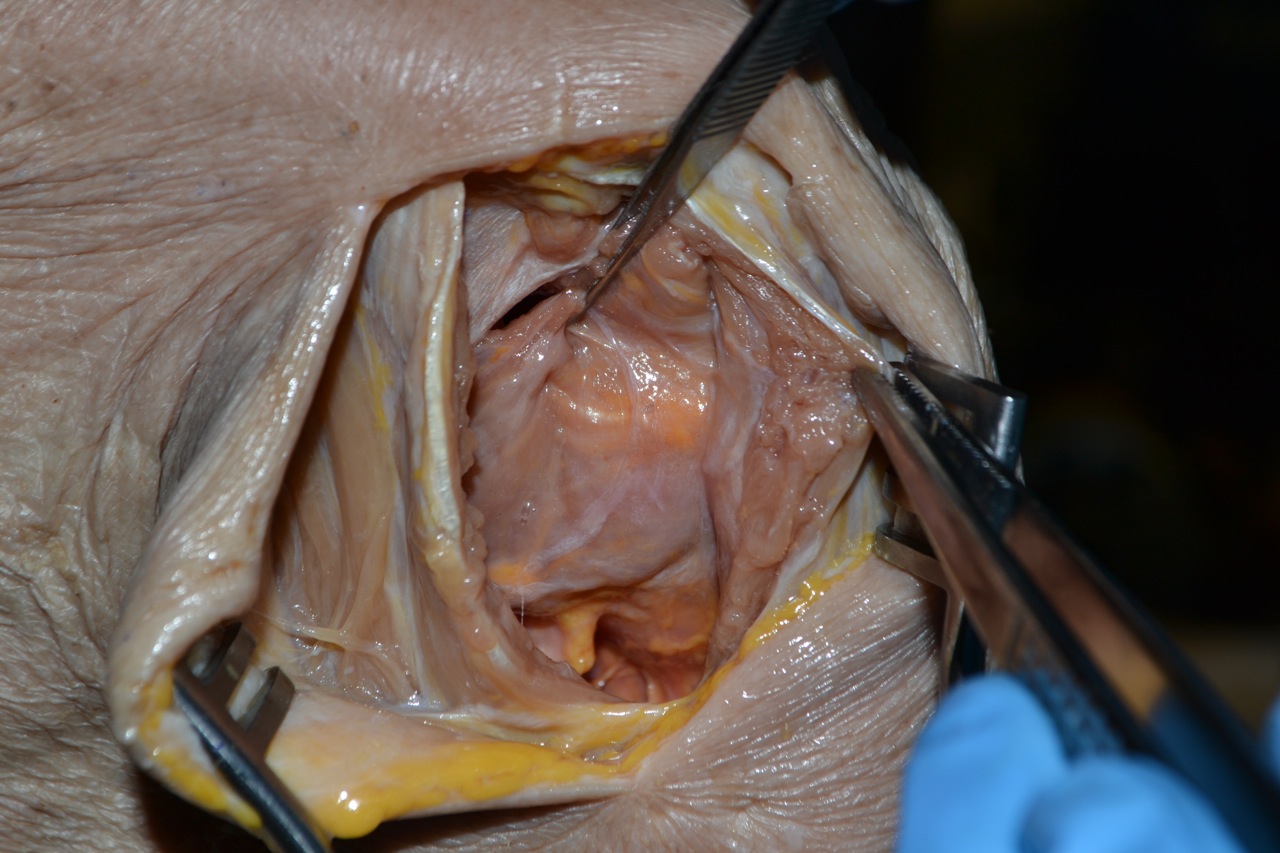Approaches
Anterior
Anterolateral
Posterior
Anterior Approach / Deltopectoral
Indications
- shoulder stabilization
- arthroplasty
- fracture fixation
Approach
Position
- beach chair
- upper body elevated 30- 40o / reduces venous pressure and bleeding
- knees flexed / pressure point care
- headrest
- sandbag under ipsilateral shoulder / lifts shoulder forward so arm can fall back / opens GHJ
- arm draped free
Landmarks
- coracoid process and deltoid groove
Incisions
1. Anterior
- deltopectoral groove
- from coracoid to axilla
2. Axillary
- incision in anterior axillary skin fold
- requires more extensive undermining of skin edges
Superficial Dissection
- find cephalic vein in deltopectoral groove
- take laterally or medially (more branches to ligate)
- finger dissection in groove and up to coracoid
- insert retractor
- identify conjoint tendon
- dissection remains lateral to conjoined tendon to avoid NV bundle
- musculocutaneous nerve enters medially
- divide clavipectoral fascia
- elevate subdeltoid space
- place retractor under conjoint tendon / gentle retraction
Deep dissection
- subscapularis muscle underlies clavipectoral fascia
- arm put in ER to reveal SSC
- sutures in medial aspect SSC
- subscapularis incised 1cm from insertion and separated from capsule
- leave inferior 1/4 of SSC to protect AXN

Extension
Proximally
- superomedially over middle 1/3 clavicle
- perform clavicular osteotomy to gain access to underlying axillary artery and brachial plexus
Distally
- release upper 1/2 pectoralis raphe +/- part deltoid insertion
- biceps retracted medially & brachialis split
Anterolateral Approach
Indications
- acromioplasty
- ACJ resection
- open rotator cuff repair
- ORIF GT fracture
- IM humeral nail
Approach
Position
- beach chair
Incision
- antero-lateral corner of the acromion
- transversely from ACJ along anterior edge acromion
- antero-laterally from AL corner acromion
Dissection
- find raphae between anterior and lateral deltoid
- deltoid split, must protect underlying rotator cuff
- detach anterior deltoid from anterior acromion
- control bleeding acromial branch of thoracoacromial artery
- axillary nerve 7 cm below acromion
- cannot split futher than 5 cm below acromion
- coracoacromial ligament detached from acromion
- bursectomy
- humeral head rotated to examine RC
Posterior approach
Indications
- open posterior stabilisation
- glenoid osteotomy / bone graft
- ORIF glenoid neck fracture
Approach


Position
- lateral position with arm draped free
- beach chair with access to posterior shoulder
Landmarks
- acromion and scapula spine
Incision
1. Transverse along entire scapular spine to PL corner acromion
2. Longitudinal from postero-lateral acromion to axilla
Internervous plane
- between IS (suprascapular nerve) and T minor (axillary nerve)
Superficial dissection
1. Deltoid split in line of fibres
- infraspinatous and teres minor exposed
- IS tagged laterally then detached 1 cm from insertion
- joint capsule exposed




2. Detach deltoid from spine of scapula
- reflect deltoid laterally
- expose infraspinatus
- tenotomy
Dangers
Axillary nerve / posterior circumflex humeral artery
- emerges through quadrangular space beneath T minor
Suprascapular nerve
- passes around base of scapular spine
- IS must not be forcefully retracted medially to stretch the nerve around base of scapular spine
